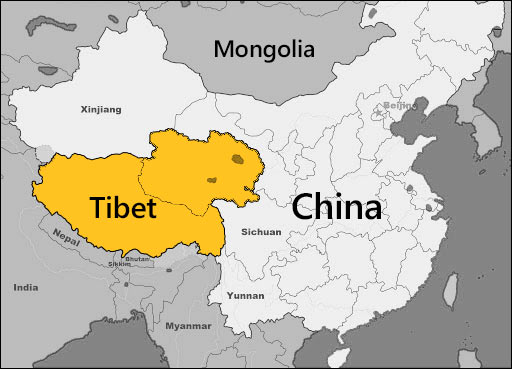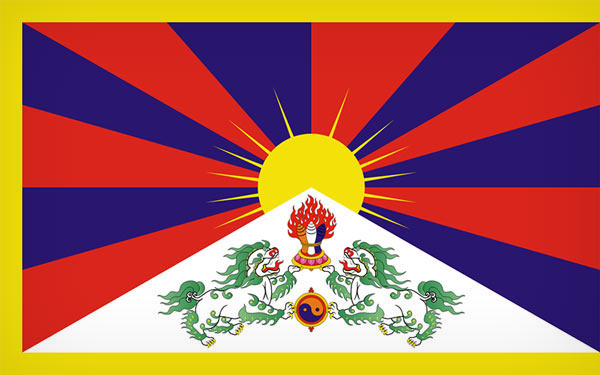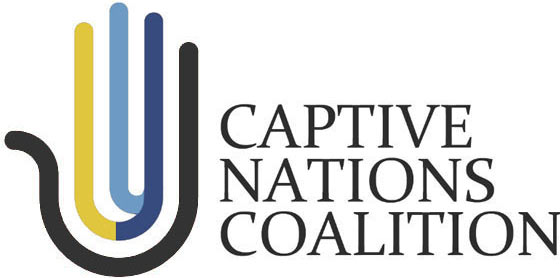Tibet
“It is time for the government of China to stop holding innocent religious figures in captivity merely for peacefully protesting China’s occupation of Tibet.”
– Amb. Sam Brownback

Made up of three parts, Utsang, Kham, and Amdo, Tibet was once a sovereign nation until the CCP invasion in the 1950’s. The current map of Tibet under the People’s Republic of China (PRC) only contains Utsang, and parts of Kham. The original region of Amdo was changed to Qinghai after the Chinese takeover of Tibet.

Tibetan National Flag
Tibetan diaspora
- Places of settlement: India, Nepal, Bhutan, US, UK, France, Canada, Switzerland, Japan, Taiwan, Brazil
- The Dalai Lama settled in Dharamsala, India, where he officially set up a government in exile and rebuilt monasteries and educational facilities that were destroyed in Tibet.
Tibet Official/Unofficial Stance
- Middle Way Approach (Tibetan Term: Umaylam)
The Middle Way Approach proposes that Tibet should be recognized as an autonomous region in order to ensure the protection and the preservation of the Tibetan identity, culture, and religion. The Middle Way Approach is the official stance of the Central Tibetan Administration (CTA) also known as the Tibetan Government-in-Exile and is supported by the Dalai Lama. - Independence (Tibetan Term: Rangzen)
The independence of Tibet is supported by majority of Tibetans. Independence is viewed as the ultimate and the best solution of guarantee for Tibetan Freedom. However, because of the official stance of the CTA and the Dalai Lama, the Middle Way Approach, the official push for complete independence was mostly done by individual groups and NGOs in the Tibetan communities across the world.
Tibet at a glance:*
- Sovereignty: The Dalai Lama says Tibet was independent and has been colonized. China says its sovereignty over Tibet goes back centuries.
- What is Tibet? China considers this to be the Tibetan Autonomous Region. Dalai Lama says it should include neighbouring provinces with Tibetan populations.
- Repression: Dalai Lama says 1.2 million people were killed under Chinese rule. China disputes this.
- Culture: Dalai Lama says China actively suppressed Tibetan identity. China acknowledges some abuses but says it is helping the revival of Tibetan culture.
- Development: China says it has brought improvements in health and the economy. Dalai Lama says development has favoured Han Chinese immigrants.
- International response: No country openly disputes China’s claim to sovereignty, and China has blocked all UN Security Council resolutions on Tibet since the People’s Republic took over the China seat in the UN in 1971.
- The free-Tibet movement: The Tibetan cause has won the sympathy of individuals and groups, many of whom campaign for an independent Tibet to take shape.
* Source: BBC.com
Attack on Tibetan Buddhism
- The CCP, an atheist regime, has announced that it will have the sovereign right to choose the Dalai Lama’s reincarnation. The CCP has already in the years past, chose its own Panchen Lama (a high Tibetan lama who helps to decide the next Dalai Lama and the second highest figure in Tibetan Buddhism) and kidnapped the one recognized by the Dalai Lama as the previous Panchen Lama’s reincarnation.
- Inside Tibet, over 6,000 Monasteries were destroyed over the years.
Human Rights Abuses
- Tibetans face intense surveillance in their daily lives, with security cameras, police checkpoints and party officials monitoring their movements and activities.
- Peaceful protests are suppressed with severe violence. Protesters are imprisoned, tortured and may even be shot.
- China has repeatedly violated UN conventions through extensive use of torture against Tibetan political prisoners.
- Prisons in Tibet are full of people detained for simply expressing their desire for freedom. They are arrested and convicted for peaceful acts, such as waving the Tibetan flag, calling for the return of the Dalai Lama and sending information about events in Tibet abroad.
- Many Tibetans are imprisoned on unclear or unspecified charges, their families not informed of their whereabouts. They are denied access to proper legal support and face trials that do not respect international standards of justice.
- Tibetans charged with “separatism” (acts intended to divide or damage the Chinese state) can face sentences up to and including the death penalty.
- Even children face abuses of their freedom and human rights.
Cultural and Religious Persecution
- The Tibetan flag and national anthem are banned.
- Tibetan Buddhism is seen as a threat to the occupying Chinese state and possessing Dalai Lama images or teachings can result in imprisonment and torture.
- Chinese officials closely monitor and control religious activity at monasteries and nunneries.
- Since 2016, Larung Gar – the biggest Buddhist institute in Tibet, and indeed in the world – has been the target of a major assault. Thousands of individuals have been evicted and thousands of homes demolished – and these removals continue today. Another large monastic town Yarchen Gar has also suffered the same fate.
- Writers, singers, artists and teachers are jailed for celebrating Tibetan national identity and for any criticism of China’s rule.
- Chinese is the language of schooling and business, disadvantaging Tibetans and threatening their mother tongue.
- Tibetan school children are also being denied classes in their mother tongue, and increasingly being taught in Chinese instead.
